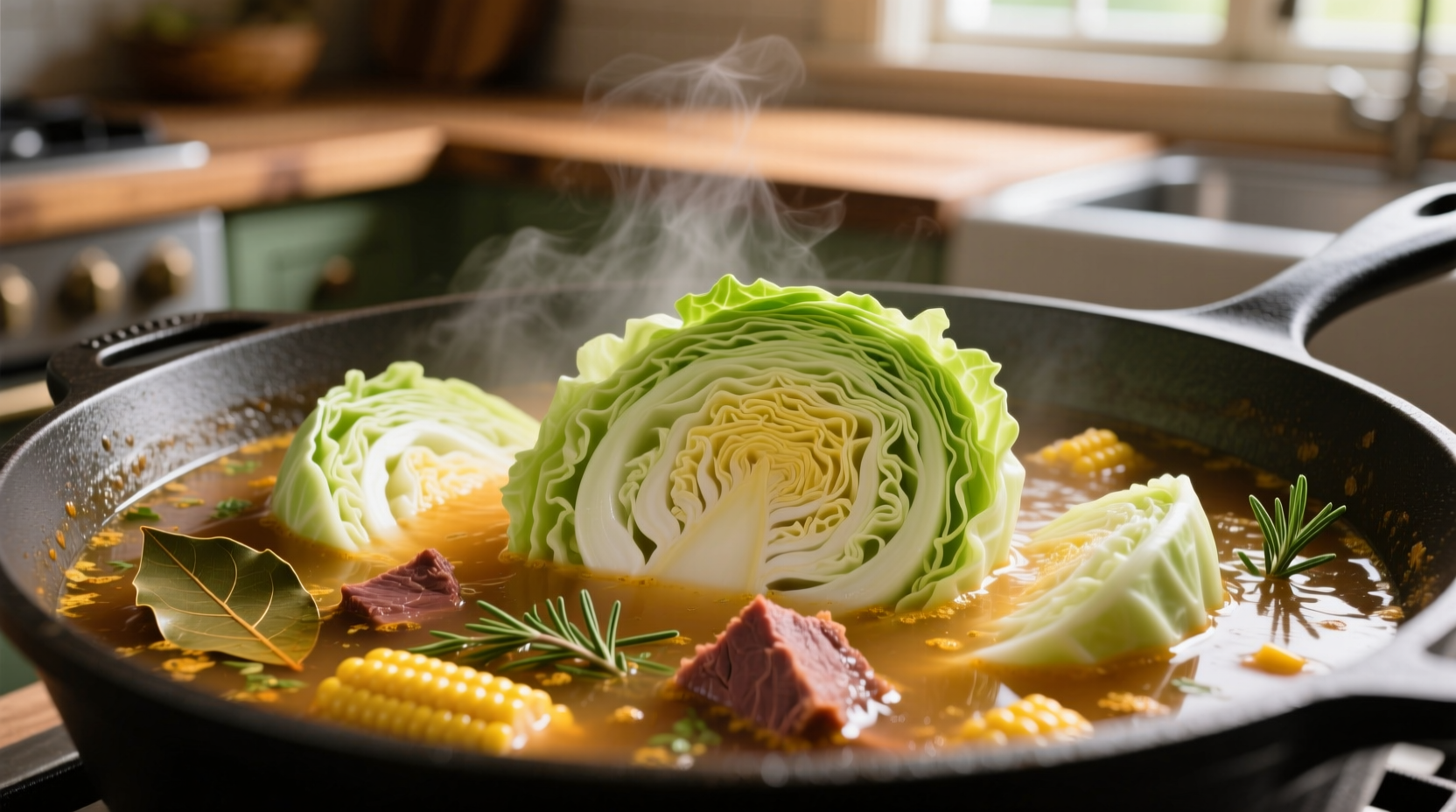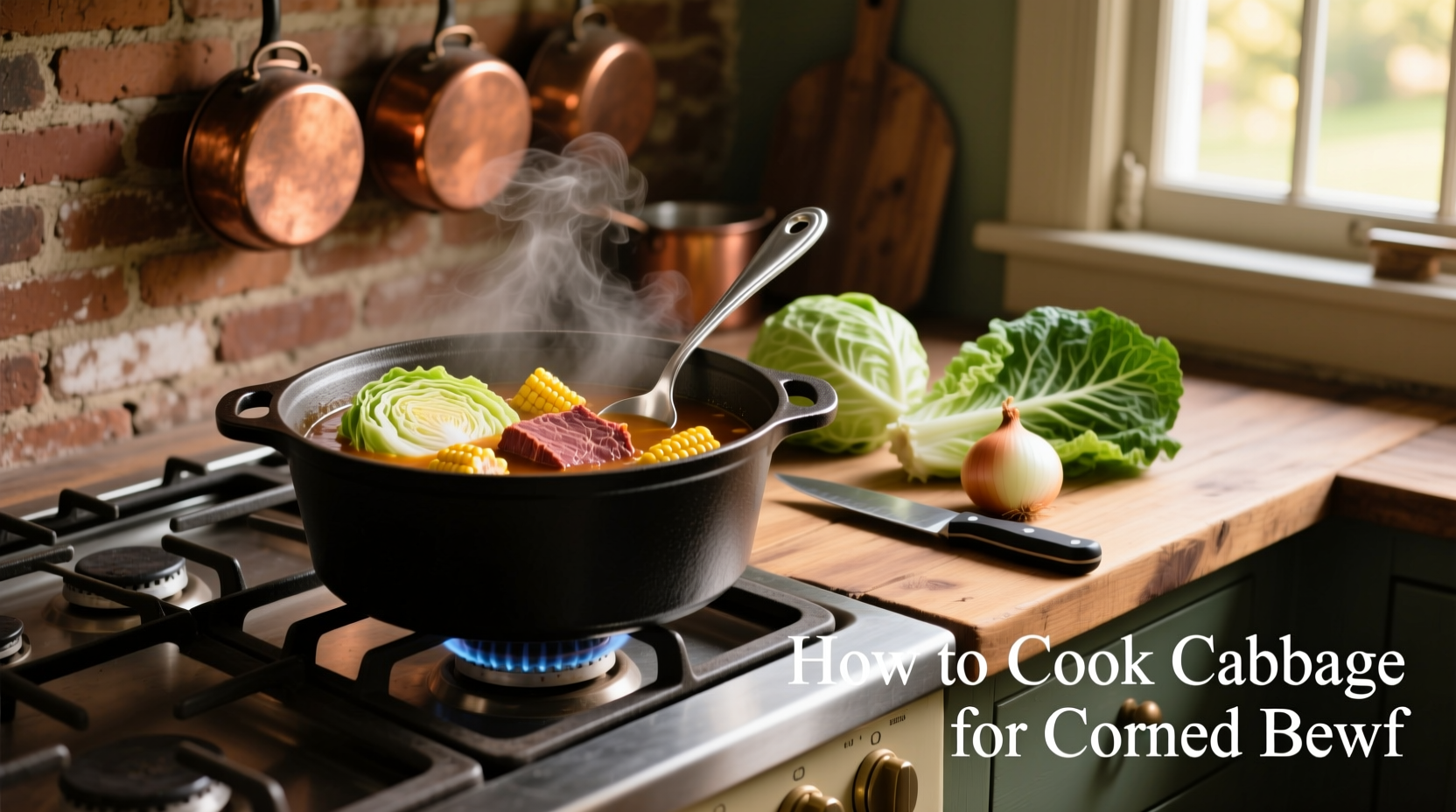Preparing cabbage perfectly for corned beef transforms this classic meal from ordinary to exceptional. Many home cooks make the critical mistake of adding cabbage too early, resulting in overcooked, mushy vegetables that lack visual appeal and proper texture. As someone who's taught thousands of home cooks professional techniques, I've found that mastering just three key elements—timing, preparation method, and seasoning—guarantees restaurant-quality results every time.
Essential Cabbage Preparation Steps
Before your corned beef even hits the pot, proper cabbage preparation sets the stage for success. Start with fresh, firm heads showing no yellowing or soft spots—these indicate age and potential bitterness. Remove any damaged outer leaves, then rinse thoroughly under cold water, separating layers to remove hidden dirt.
Cutting technique significantly impacts cooking results. For traditional corned beef and cabbage, quarter the head vertically through the core, keeping wedges intact. This maintains structural integrity during cooking. If you prefer smaller pieces, cut into 1.5-inch thick slices instead of fine shreds, which cook too quickly and become waterlogged.

Timing Your Cabbage Addition Perfectly
Understanding when to introduce cabbage to your corned beef broth separates good cooks from great ones. Corned beef requires 2.5-3 hours of simmering to reach ideal tenderness, while cabbage needs just 15-20 minutes. Adding cabbage too early creates unappetizing, overcooked results.
| Cooking Method | Optimal Timing | Texture Result | Flavor Absorption |
|---|---|---|---|
| Boiled with Corned Beef | Last 15-20 minutes | Tender-crisp | Excellent |
| Steamed over Broth | Last 10-15 minutes | Firmer texture | Moderate |
| Separate Simmer | After corned beef done | Most consistent | Controlled |
The USDA Food Safety and Inspection Service confirms that cabbage maintains optimal nutrient retention and texture when cooked for 15-20 minutes in liquid at 180-200°F (82-93°C). Overcooking beyond 25 minutes causes significant vitamin loss and structural breakdown.
Avoiding Common Flavor Pitfalls
Many cooks unknowingly dilute the rich corned beef broth by adding plain water when cooking cabbage. Instead, use the existing flavorful cooking liquid—this broth contains precious collagen and spices that elevate your cabbage. If liquid levels run low, supplement with additional beef broth rather than water.
Seasoning considerations matter more than you might think. While corned beef provides substantial saltiness, add just 1-2 tablespoons of apple cider vinegar during the last 5 minutes of cooking. This brightens flavors without overwhelming the dish. For authentic Irish-American preparation, include one whole peeled onion and 6-8 whole peppercorns in the pot with your cabbage.
Texture Troubleshooting Guide
When your cabbage emerges less than perfect, these quick fixes solve common issues:
- Mushy cabbage: Reduce cooking time by 5 minutes next time and ensure corned beef is nearly done before adding cabbage
- Bland flavor: Simmer cabbage in broth 5 minutes longer or add 1 teaspoon caraway seeds during final cooking stage
- Excess liquid: Remove cabbage wedges first, then reduce broth by rapid boiling for 3-4 minutes before serving
Professional kitchens often employ a technique called "shocking" to preserve perfect texture—immediately transferring cooked cabbage to ice water for 30 seconds after removal from broth, then reheating briefly in reduced broth before serving. This maintains vibrant color and firm texture.
Serving Like a Pro
Arrange cabbage wedges around sliced corned beef on a warm platter, spooning reduced broth over both. For elegant presentation, tuck fresh parsley sprigs between portions. If serving family-style, keep cabbage separate from meat until ready to eat—this prevents continued cooking and maintains ideal texture.
Leftover cabbage transforms beautifully in第二天's meals. Sauté with onions and bacon for corned beef hash, or blend into a creamy soup with potatoes and reserved broth. Properly stored in airtight containers, cooked cabbage maintains quality for 3-4 days in the refrigerator according to FoodSafety.gov guidelines.
Frequently Asked Questions
Can I use different cabbage varieties? Yes, but with important distinctions. Green cabbage works best for traditional preparation due to its firm texture. Savoy cabbage offers more delicate flavor but requires 3-5 minutes less cooking time. Avoid red cabbage unless specifically desired for color contrast, as it can bleed color into broth.
Should I salt the cooking water? No additional salt is necessary when cooking cabbage with corned beef. The meat releases ample sodium during cooking—typically 1,000-1,500mg per serving. Adding extra salt creates an overly salty dish that masks other flavors.
How do I prevent cabbage from turning gray? Maintain gentle simmer rather than vigorous boil, and avoid aluminum cookware which reacts with cabbage compounds. Adding 1 tablespoon of vinegar to cooking liquid preserves vibrant color while enhancing flavor.











 浙公网安备
33010002000092号
浙公网安备
33010002000092号 浙B2-20120091-4
浙B2-20120091-4